How to Build an Elegant Wooden Shoe Cabinet
Building an elegant wooden shoe cabinet is not just about functionality; it's about creating a stunning piece of furniture that enhances your home’s aesthetic. Imagine walking into your entryway and being greeted by a beautifully crafted cabinet that not only organizes your shoes but also serves as a stylish focal point. Whether you’re a DIY novice or a seasoned woodworker, this guide will walk you through every step of the process, from selecting the right materials to adding those final finishing touches that make your cabinet truly shine.
When it comes to building a shoe cabinet, choosing the right wood is crucial. The type of wood you select will impact both the durability and the look of your cabinet. For instance, hardwoods like oak and maple are known for their strength and beautiful grain patterns, making them excellent choices for furniture. On the other hand, softwoods like pine are lighter and easier to work with, but may not hold up as well over time. Here’s a quick comparison of popular wood types:
| Wood Type | Durability | Aesthetics | Cost |
|---|---|---|---|
| Oak | High | Beautiful grain | $$$ |
| Maple | High | Light color | $$$ |
| Pine | Medium | Rustic look | $ |
| Birch | Medium | Fine grain | $$ |
Consider the overall style of your home when selecting wood. Will it blend well with your existing furniture? And don't forget about your budget! Sometimes, a beautiful piece of furniture can be made from less expensive materials with the right finishing techniques.
Before diving into your project, it’s essential to gather all the necessary tools and materials. Having everything on hand not only saves time but also keeps your creative flow uninterrupted. Here’s a quick rundown of what you’ll need:
- Wood: Choose your preferred type based on the earlier discussion.
- Tools: Miter saw, hand saw, drill, screws, wood glue, and clamps.
- Finishing supplies: Sandpaper, wood stain, and sealant.
Being prepared is half the battle won. So take a moment to ensure you have everything before you start cutting and assembling your cabinet.
Now that you have your materials, it’s time to measure and cut the wood. Accurate measurements are vital to ensure that all pieces fit together perfectly. Use a tape measure to mark your wood, and double-check your measurements before making any cuts. It’s often said, “Measure twice, cut once,” and this adage holds true in woodworking. The precision of your cuts will determine the overall look and sturdiness of your cabinet.
A miter saw is a fantastic tool for making angled cuts. To use it effectively, start by setting the angle you need for your cabinet pieces. Always wear safety goggles and follow the manufacturer’s instructions. With a steady hand and a clear mind, let the saw do the work. The clean cuts you achieve will make assembly much easier.
If power tools aren’t your thing, don’t worry! A hand saw can also get the job done. The key is to keep your cuts straight and use a steady motion. It might take a bit more effort, but the satisfaction of crafting something by hand is incredibly rewarding. Remember to take your time; rushing can lead to mistakes, which can be frustrating!
With all your pieces cut and ready, it’s time to assemble your cabinet. Start by laying out all the components and familiarizing yourself with how they fit together. Use wood glue for added strength, and don’t forget to clamp your pieces while the glue dries. This ensures a tight bond and a sturdy structure. Follow this step-by-step process:
- Attach the sides to the bottom piece.
- Secure the back panel to add stability.
- Install shelves or dividers as needed.
- Finish by adding the top panel.
Once your cabinet is assembled, it’s time for the finishing touches. This part is where your cabinet can truly shine. Start by sanding the surfaces to smooth out any rough edges. Then, apply a wood stain to enhance the natural beauty of the wood grain. Finally, seal your cabinet with a protective coat to ensure it lasts for years to come. This step not only beautifies your piece but also protects it from moisture and wear.
The finish you choose can dramatically affect the appearance of your cabinet. Whether you prefer a glossy sheen or a matte look, there are various options available:
- Polyurethane: Offers durability and a glossy finish.
- Oil-based stains: Enhance the wood's natural color.
- Water-based finishes: Quick drying and less odor.
Consider testing a small area first to see how the finish interacts with the wood. This can save you from unexpected surprises later on!
Finally, let’s talk about hardware. The right handles, hinges, and accessories can elevate the overall design of your shoe cabinet. Consider finishes that complement your wood choice; for example, brushed nickel or antique brass can add a touch of elegance. Don’t be afraid to get creative with your hardware choices—sometimes, a unique handle can be the perfect finishing touch!
Q: How long does it take to build a shoe cabinet?
A: The time it takes can vary based on your experience and the complexity of the design, but typically, a simple cabinet can be completed in a weekend.
Q: What type of wood is best for outdoor shoe cabinets?
A: For outdoor use, consider using cedar or redwood, as they are naturally resistant to moisture and insects.
Q: Can I customize the size of the cabinet?
A: Absolutely! One of the great things about building your own cabinet is that you can tailor it to fit your space perfectly.

Choosing the Right Wood
When it comes to building an elegant wooden shoe cabinet, is not just about aesthetics; it's about durability and functionality too. Think of wood as the backbone of your project—if you pick the wrong type, your beautiful cabinet might end up looking like a wobbly mess after a few months! So, let’s dive into the various wood options available and how to select the best one for your needs.
First off, consider the different types of wood you can use. Here are some popular choices:
- Pine: This is an affordable softwood that is easy to work with. It’s perfect for beginners and can be painted or stained to match your decor. However, keep in mind that it can be prone to dents and scratches.
- Oak: A hardwood that boasts strength and durability, oak is perfect for a cabinet that will see a lot of use. Its natural grain patterns add a touch of elegance, making it a popular choice for furniture.
- Maple: Another sturdy hardwood, maple has a fine, consistent grain that looks fantastic when finished. It's resistant to wear, making it an excellent choice for a shoe cabinet.
- Birch: Birch is known for its smooth surface and light color, which can brighten up any space. It’s a great option if you prefer a minimalist aesthetic.
Now that you have an idea of the types of wood available, think about your specific needs. Are you looking for something that can withstand the test of time? Go for hardwoods like oak or maple. If you’re on a budget and want something easy to handle, pine might be your best bet. Also, consider the environmental impact of your choice. Opt for sustainably sourced wood whenever possible to ensure you're making an eco-friendly decision.
Another factor to consider is the finish. Different woods absorb stains and finishes in unique ways, which can dramatically alter their appearance. For instance, oak tends to take on a rich, deep hue when stained, while pine may require a primer to achieve a uniform look. Think about how you want your cabinet to blend with your existing decor and choose a wood that complements those colors and styles.
In conclusion, selecting the right wood for your shoe cabinet is a critical step that sets the foundation for your entire project. Take your time to explore your options, weigh the pros and cons, and consider how each type of wood aligns with your vision. Remember, the right wood not only enhances the beauty of your cabinet but also ensures it stands the test of time!
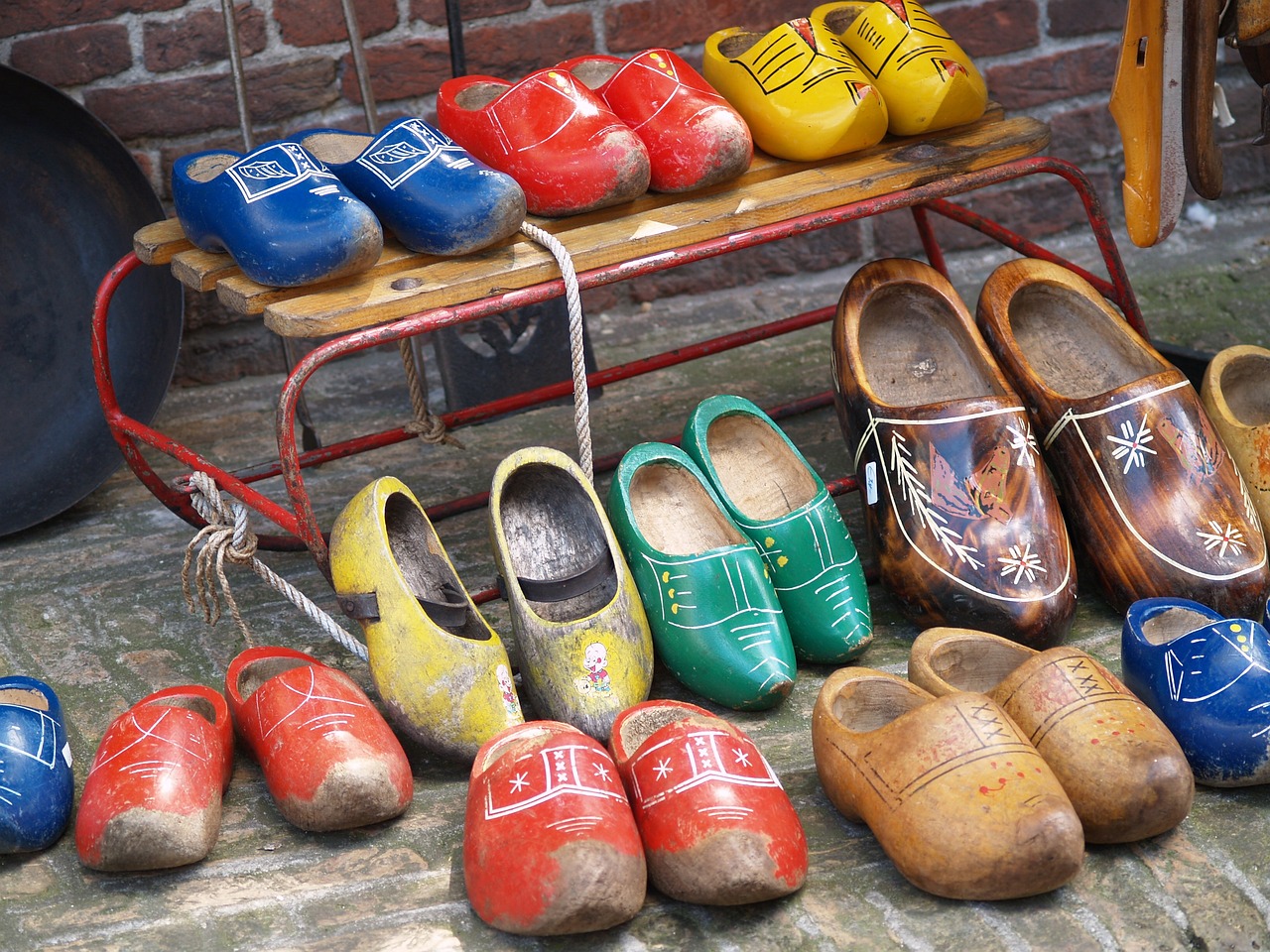
Essential Tools and Materials
Before you dive into the exciting world of woodworking and embark on your journey to create a stunning wooden shoe cabinet, it's crucial to gather all the essential tools and materials. Having everything at your fingertips not only streamlines the process but also ensures that your creativity flows without interruptions. Imagine trying to paint a masterpiece but realizing halfway through that you’ve run out of paint; it’s a mood killer, right?
First off, let’s talk about the materials. The type of wood you choose can significantly impact the overall look and durability of your cabinet. Popular options include pine, known for its affordability and ease of use, oak, which offers a robust structure and beautiful grain, and maple, celebrated for its hardness and fine texture. Each wood type has its unique charm, so consider what fits your style and budget best.
Now, onto the tools! Here’s a quick rundown of what you’ll need:
- Measuring Tape: Precision is key, so a good measuring tape is essential.
- Miter Saw: Perfect for making angled cuts with ease.
- Hand Saw: A reliable alternative if you prefer traditional methods.
- Drill: For making holes and securing screws.
- Screwdriver: Essential for assembling your cabinet.
- Sanding Block: To smooth out rough edges and surfaces.
- Wood Glue: For a strong bond between pieces.
- Clamps: To hold everything in place while the glue dries.
Having the right tools is like having the right ingredients in a recipe; it can make all the difference between a delicious outcome and a culinary disaster. Each tool plays a vital role in ensuring your cabinet is not only beautiful but also sturdy and functional. For instance, using a miter saw allows for precise angled cuts, giving your cabinet a professional touch. Meanwhile, hand saw techniques can be just as effective if you prefer a more hands-on approach.
Before you start, take a moment to lay out your workspace. A clean and organized area will help you work efficiently and safely. Think of your workspace as your canvas; the more prepared you are, the better your creation will turn out. So, gather your tools, choose your materials wisely, and get ready to transform a few pieces of wood into something extraordinary!
In summary, the essential tools and materials are your allies in this DIY adventure. With the right equipment, you’ll find that building your elegant wooden shoe cabinet is not just a task but a rewarding experience. So, roll up your sleeves, put on your creative hat, and let’s get started!
Q: What type of wood is best for a shoe cabinet?
A: It depends on your preference! Pine is great for beginners due to its softness and affordability, while oak and maple offer more durability and aesthetic appeal.
Q: Can I use hand tools instead of power tools?
A: Absolutely! Hand tools can achieve excellent results, though they may require more effort and time. It's all about what you're comfortable with.
Q: How much will this project cost?
A: The cost varies based on the type of wood and tools you choose, but budgeting around $100 to $300 is a reasonable estimate for a quality cabinet.
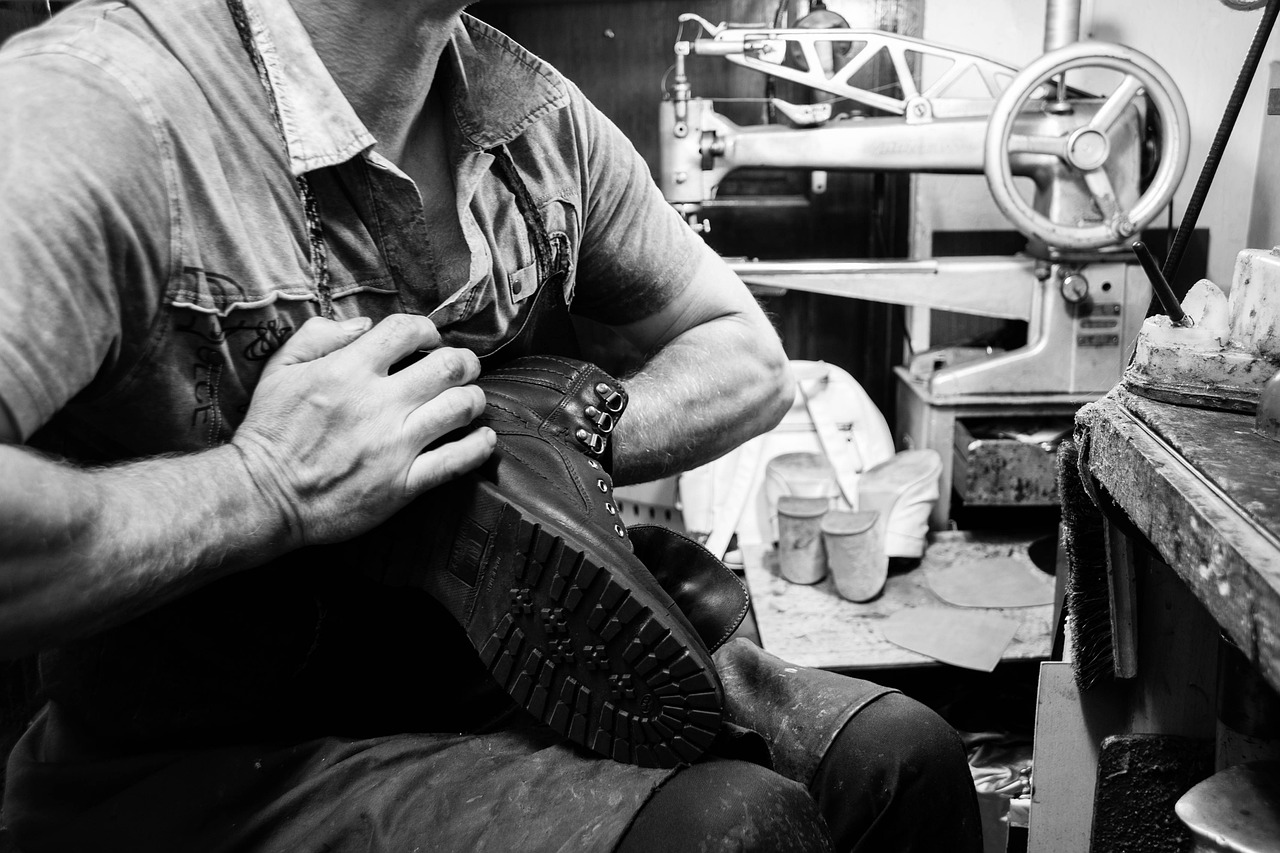
Measuring and Cutting Wood
When it comes to building your elegant wooden shoe cabinet, accurately is the cornerstone of your project. Imagine trying to fit a square peg in a round hole; that's what it feels like when your measurements are off. Start by gathering your materials and tools, and remember, "measure twice, cut once" is not just a saying, it's a golden rule in woodworking.
Before you even pick up a saw, take the time to plan out your design. Sketch your cabinet on paper and note down the dimensions. A well-thought-out plan will save you time and frustration later on. Once you have your design, use a reliable measuring tape to mark your wood. It's essential to mark both the width and length of each piece, ensuring that you account for any additional components like shelves or doors.
For the cutting process, you have a couple of options depending on your comfort level with tools. If you're looking for precision, a miter saw is a fantastic choice. This tool not only allows you to make straight cuts but also angled ones, which can be particularly useful for creating a more sophisticated look with beveled edges. However, if you don't have access to power tools, don't fret! A hand saw can also do the job effectively. Just be sure to use a straight edge to guide your cuts, and take your time to ensure you maintain accuracy.
Here's a quick overview of some essential techniques for measuring and cutting:
- Use a Square: A carpenter's square will help you ensure your cuts are perfectly perpendicular.
- Mark Clearly: Use a sharp pencil for marking; clear lines make for cleaner cuts.
- Practice Cutting: If you're new to woodworking, practice on scrap pieces first to get a feel for the saw.
After you’ve cut your pieces, it's wise to do a dry fit. This means assembling the parts without any glue or fasteners to see how they fit together. This step can reveal any discrepancies in your measurements and allow you to make adjustments before the final assembly. Remember, the goal is to achieve a seamless look where everything fits snugly together.
In summary, measuring and cutting wood is not just about getting the right dimensions; it’s about laying the groundwork for a beautiful and functional shoe cabinet. By taking the time to measure accurately and cut with precision, you're setting yourself up for success in this DIY project. So grab your tools, and let’s get to work!
Q: What tools do I need for measuring wood?
A: You will need a measuring tape, a carpenter's square, a straight edge, and a pencil for marking.
Q: Can I use a hand saw instead of a power saw?
A: Absolutely! A hand saw can be just as effective if you take your time and use proper techniques.
Q: What should I do if my cuts are not perfectly straight?
A: Don’t worry too much. You can sand down uneven edges later, or use wood filler to make adjustments.
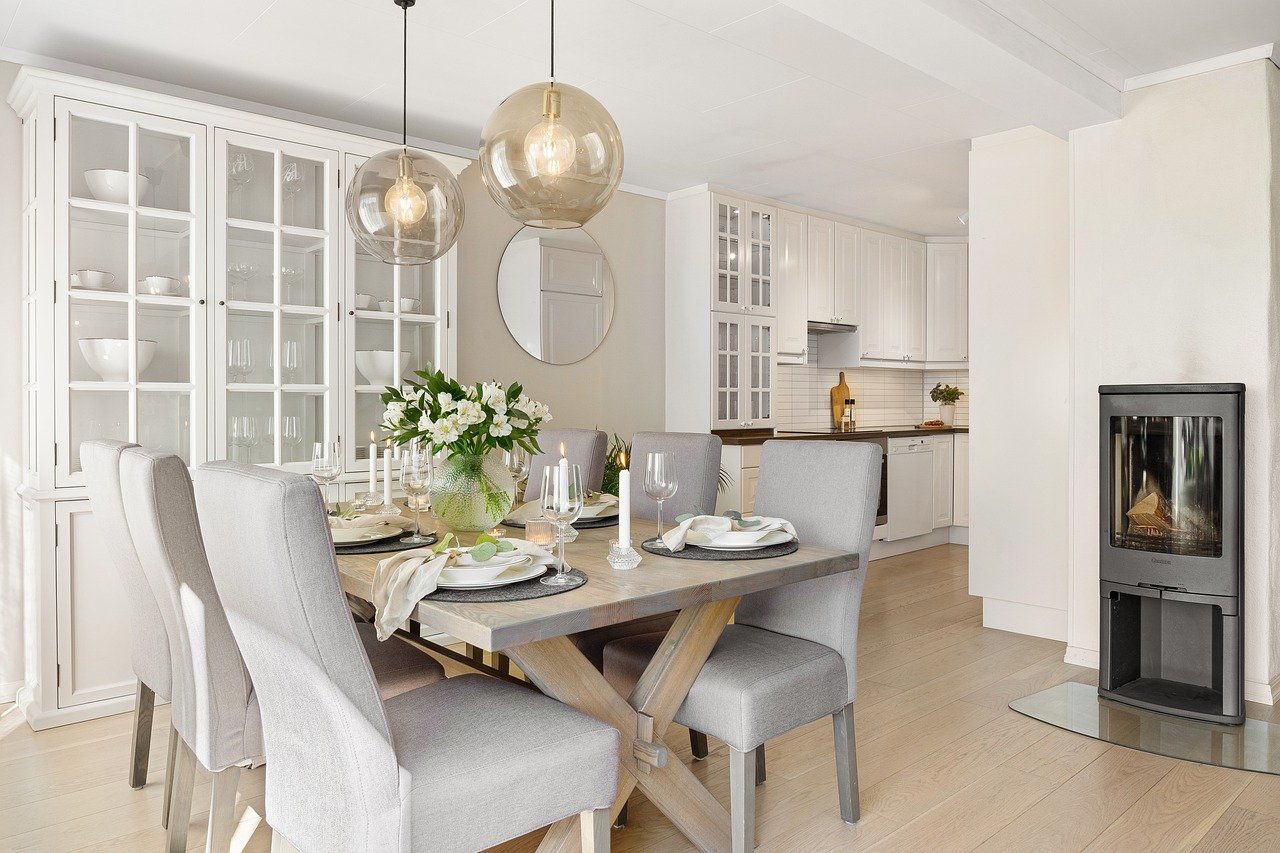
Using a Miter Saw
When it comes to crafting a stunning wooden shoe cabinet, precision is key, and that's where a miter saw shines. This powerful tool is designed specifically for making angled cuts, which can be crucial for achieving those clean, professional-looking edges that elevate your project from amateur to expert. Imagine your shoe cabinet with perfect corners and seamless joints—it's all possible with the right technique!
First things first, let’s talk about how to set up your miter saw. Make sure you have a stable work surface and that the saw is securely clamped down. Safety is paramount, so always wear protective eyewear and earplugs to shield yourself from flying debris and noise. Once you’re geared up, adjust the miter angle according to your project needs; for most shoe cabinets, a 45-degree angle is common for the corners.
Now, here’s a pro tip: before you make any cuts, take a moment to measure twice and cut once. This old adage holds true, especially when working with wood. Place your wood on the saw bed, ensuring it’s flush against the fence. This will help you achieve the most accurate cuts. As you engage the saw, let the blade do the work—don’t force it through the wood. A gentle, steady pressure will yield the best results.
Once you've made your cuts, take a moment to inspect each piece. Check for smooth edges and ensure that they fit together perfectly. If you notice any rough spots, a quick pass with sandpaper will smooth them out, ensuring a snug fit when you assemble your cabinet.
Using a miter saw can be a game changer for your DIY projects. Not only does it save time, but it also enhances the overall quality of your work. So, embrace this tool and watch your shoe cabinet transform into a piece of art that you’ll be proud to show off!
- What is a miter saw used for? A miter saw is primarily used for making precise angled cuts in wood, which is essential for projects like cabinets, frames, and moldings.
- Can I use a miter saw for cutting other materials? While miter saws are designed for wood, some models can handle materials like plastic and soft metals. Always check the manufacturer's guidelines.
- How do I maintain my miter saw? Regular maintenance includes cleaning the blade, checking for any loose parts, and ensuring the saw is calibrated correctly for accurate cuts.

Hand Saw Techniques
When it comes to building your elegant wooden shoe cabinet, using a hand saw can be a rewarding experience. Although it may seem daunting at first, mastering hand saw techniques will not only enhance your woodworking skills but also give you greater control over your cuts. Imagine the satisfaction of crafting something beautiful with your own hands, feeling the wood's texture as you work. So, let’s dive into some essential techniques that will help you achieve straight, accurate cuts.
First and foremost, proper grip and stance are crucial. Stand comfortably with your feet shoulder-width apart, ensuring you have a stable base. Hold the saw firmly but not too tightly—think of it like shaking hands with an old friend; you want to be firm yet gentle. Your dominant hand should grip the handle, while your other hand supports the wood piece you’re cutting. This setup will allow you to maintain balance and control throughout the cutting process.
Next, let’s talk about marking your cuts. Before you even pick up the saw, use a pencil and a square to mark where you want to cut. This step is vital as it guides you and helps prevent mistakes. A little preparation goes a long way! Once your lines are marked, place the wood securely on a stable surface, like a workbench or sawhorses. If you can, use clamps to hold the wood in place; this will prevent it from moving while you saw, ensuring a cleaner cut.
Now, onto the actual sawing technique. Start your cut by positioning the saw on the marked line and applying light pressure to create a groove. This initial groove will guide the saw and prevent it from wandering off course. As you begin to saw, use long, smooth strokes, letting the saw do the work. Think of it like a dance; the rhythm of your movements will lead to a more precise cut. Remember, it’s not about speed; consistency is key.
Here are a few additional tips to keep in mind:
- Always saw on the waste side of the line to ensure you don’t accidentally cut too short.
- Use the entire length of the saw blade for efficient cutting.
- Keep the saw at a slight angle, about 45 degrees, to maintain a clean cut.
Finally, once you’ve completed your cut, take a moment to inspect your work. If the edges are rough, a little sanding can smooth them out beautifully. Hand saws may take a bit longer than power tools, but the precision and craftsmanship you develop will be worth the effort. Plus, there’s something incredibly satisfying about knowing you did it all by hand.
Q: Can I use any hand saw for my shoe cabinet project?
A: While you can use various hand saws, a panel saw or a crosscut saw is ideal for cutting wood accurately. Choose the one that feels comfortable in your hands.
Q: How do I maintain my hand saw?
A: Keep your saw clean and dry. Occasionally, you can sharpen the teeth with a file to maintain its cutting efficiency.
Q: Is it difficult to learn hand saw techniques?
A: Like any skill, it takes practice. Start with simple cuts and gradually work your way up to more complex projects. With time, you’ll become more confident!

Assembling the Cabinet
Now that you've meticulously cut all the pieces for your elegant wooden shoe cabinet, it's time to bring everything together in the assembly phase. This is where your vision starts to take shape, and you’ll see how all those measurements and cuts come together. But hold on! Before you dive in, it's crucial to ensure that you have a clear plan and all the necessary tools at your fingertips. Think of this stage as the moment when a puzzle finally starts to reveal its picture; every piece has its place, and your goal is to fit them together seamlessly.
Begin by laying out all your pieces on a flat surface. This will give you a bird's-eye view of everything you're working with, allowing you to double-check that you have all the components needed for assembly. Typically, you’ll have the top, bottom, sides, and shelves, along with any additional decorative elements you may want to include. It's like gathering your ingredients before cooking a delicious meal—everything needs to be ready to create something wonderful!
Next, take a moment to familiarize yourself with the assembly process. You’ll want to start by joining the sides to the top and bottom panels. For this, wood glue is your best friend. Apply a generous amount of glue to the edges where the panels will meet, then use clamps to hold everything in place while the glue dries. This step is crucial as it ensures a strong bond, making your cabinet sturdy and durable. Remember, patience is key here—allow the glue to cure fully before moving on. It's like letting a cake cool before frosting it; you want everything to set just right!
Once the glue has dried, it's time to reinforce the structure. You can use screws to secure the joints further. Pre-drill holes to prevent the wood from splitting, and then drive in the screws. This not only adds strength but also helps in aligning the pieces perfectly. As you do this, think of it as tightening the screws on a bicycle; you want everything to be secure for a smooth ride!
After the main structure is assembled, you can move on to installing the shelves. Depending on your design, you might want to have adjustable shelves, which can be achieved using shelf pins. Mark the desired height on the side panels, drill holes for the pins, and then place the shelves in. This flexibility allows you to customize your cabinet based on your shoe collection—whether you have towering boots or dainty flats, it’s all about making it work for you!
Finally, don’t forget to check for any wobbling or misalignment. A level cabinet not only looks better but also functions better. If you find any issues, adjust the legs or add shims where necessary. Think of this as fine-tuning an instrument; every little adjustment can make a significant difference in the overall performance.
In summary, assembling your shoe cabinet is a rewarding experience that requires patience, precision, and a bit of creativity. With each step, you’re not just building furniture; you’re crafting a functional piece of art that reflects your style and meets your needs. So grab those tools, put on some music, and enjoy the process of bringing your elegant wooden shoe cabinet to life!
- How long does it take to assemble a shoe cabinet? The assembly time can vary based on your experience and the complexity of the design, but typically it can take anywhere from 2 to 4 hours.
- What type of wood is best for a shoe cabinet? Hardwoods like oak or maple are excellent choices for durability and aesthetics, while plywood can be a cost-effective alternative.
- Do I need special tools to assemble a shoe cabinet? While basic tools like a screwdriver and drill are essential, having a miter saw can make the process much easier and more precise.
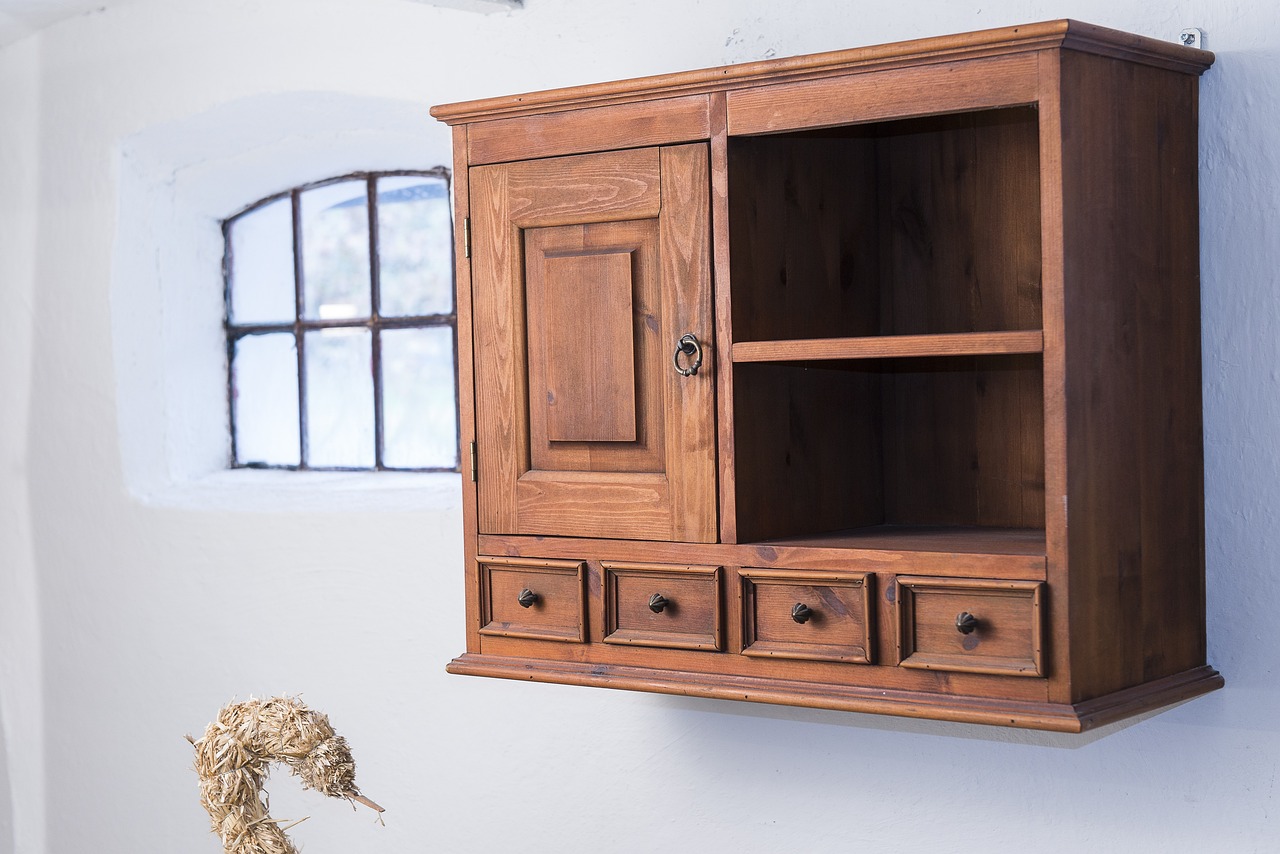
Finishing Touches
After you've meticulously crafted your wooden shoe cabinet, the are what truly elevate it from just a functional piece of furniture to a stunning centerpiece in your home. Think of this stage as the icing on the cake; it’s where your hard work shines through and reflects your personal style. The right finishing techniques not only enhance the visual appeal but also protect the wood, ensuring your cabinet lasts for years to come.
First, let’s talk about sanding. It’s tempting to skip this step, but trust me, a smooth surface makes all the difference. Start with a rough grit sandpaper, around 80-grit, to remove any imperfections or rough spots. Once that’s done, switch to a finer grit, like 220-grit, to achieve a silky-smooth finish. Remember, the goal here is to create a surface that feels as good as it looks. You wouldn’t want to run your hands over a cabinet only to feel splinters, right?
Next up is staining. This is where you can really get creative! Stains come in a variety of colors, allowing you to either enhance the natural grain of the wood or completely change its appearance. If you're aiming for a classic look, consider using a dark walnut stain. For a more contemporary vibe, a lighter finish like whitewash can do wonders. Just remember to test the stain on a scrap piece of wood first; it’s like a dress rehearsal for your cabinet! You want to ensure that you love the color before committing.
Once you've applied the stain, it’s time to seal the deal—literally! A good sealant is crucial for protecting your cabinet from moisture, scratches, and everyday wear and tear. Polyurethane is a popular choice because it provides a durable finish. You can opt for either a matte or glossy finish, depending on your style preference. Apply several thin coats, allowing each to dry completely before adding the next. This layering technique not only enhances protection but also gives your cabinet a professional look.
Now, let's not forget about the hardware and accessories. The right handles and hinges can transform your cabinet from ordinary to extraordinary. When choosing hardware, consider the overall style of your home. For a rustic feel, opt for wrought iron or antique brass. If modern is more your style, sleek chrome or brushed nickel can add that contemporary touch. Don't be afraid to mix and match; sometimes, an eclectic combination can create a unique statement piece!
Finally, to really make your shoe cabinet stand out, think about how you’ll style it. Adding decorative elements like a small plant, a framed photo, or even a stylish shoe organizer can enhance its appeal. Remember, this cabinet is not just for shoes; it can be a functional piece of art in your home!
- How long does it take to finish the cabinet? Depending on the drying times of your stain and sealant, it may take a few days to complete the finishing process.
- Can I use paint instead of stain? Absolutely! Painting can give your cabinet a completely different look, but remember to use a primer for the best results.
- What if I make a mistake while staining or sealing? Don’t worry! You can often sand down the area and start over. Just be patient and take your time.
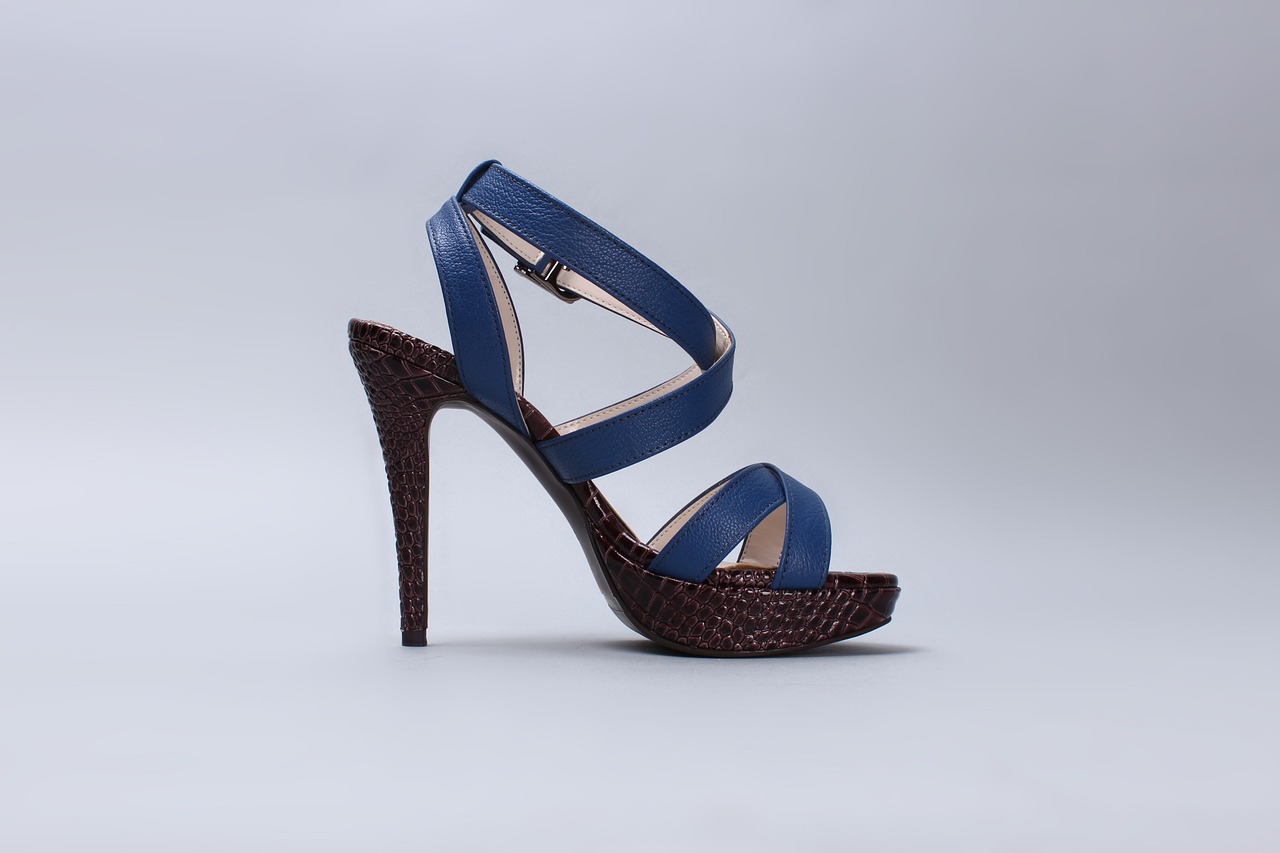
Choosing the Right Finish
When it comes to building your elegant wooden shoe cabinet, selecting the right finish is akin to choosing the perfect outfit for a special occasion. The finish not only enhances the aesthetic appeal of your cabinet but also plays a crucial role in protecting the wood from wear and tear. With so many options available, how do you decide which finish is best for your project? Let’s dive into the world of wood finishes and discover what will make your shoe cabinet truly shine.
First off, you need to consider the type of wood you’ve chosen. Different woods react uniquely to various finishes, so understanding the characteristics of your wood is essential. For instance, if you’re using a softwood like pine, a clear finish can highlight its natural beauty. On the other hand, hardwoods like oak or walnut often benefit from stains that enhance their rich grain patterns. You might find that a transparent finish allows the natural color of the wood to come through, while a stain can add depth and character.
Next, think about the environment where your shoe cabinet will reside. If it’s going to be placed in a high-traffic area or exposed to moisture, you may want to opt for a more durable finish. Here are some popular options to consider:
- Polyurethane: This synthetic finish is tough and water-resistant, making it ideal for areas that experience a lot of wear.
- Varnish: Known for its protective qualities, varnish provides a hard, glossy finish that is excellent for both indoor and outdoor furniture.
- Oil Finish: Natural oils, like tung or linseed oil, penetrate the wood and enhance its grain while providing a warm, matte finish.
- Shellac: A traditional finish that offers a beautiful sheen but may require more maintenance over time.
It’s also worth noting that the application method can impact the final look of your shoe cabinet. Some finishes are better suited for brushing, while others are designed for spraying. For example, if you’re looking for a smooth, even coat, a spray finish might be the way to go. However, if you prefer a more hands-on approach, brushing on your finish can give you greater control, especially in hard-to-reach areas.
After applying the finish, don’t forget about the drying and curing times. Patience is key here! Each finish has its own timeline for drying, and rushing this process can lead to unsatisfactory results. Make sure to read the manufacturer's instructions carefully to ensure your cabinet looks its best.
Finally, adding a finish isn’t just about looks; it’s about protection. A well-finished shoe cabinet will resist scratches, stains, and moisture, ensuring its longevity. Remember, the finish you choose should align with your lifestyle and how you intend to use the cabinet. After all, you want your creation to be as functional as it is beautiful!
Q: How do I determine which finish is best for my wood type?
A: Research the specific wood species you’re using and its compatibility with various finishes. Generally, softwoods look great with clear finishes, while hardwoods can benefit from stains.
Q: Can I apply multiple types of finishes on one cabinet?
A: Yes, but it’s important to ensure that the finishes are compatible. For instance, applying an oil finish over a water-based finish may not adhere properly.
Q: How long should I wait before using my shoe cabinet after finishing?
A: It varies by finish, but generally, allow at least 24-48 hours for the finish to dry before using the cabinet. Check the product instructions for specific curing times.

Adding Hardware and Accessories
When it comes to building your elegant wooden shoe cabinet, the right hardware and accessories can truly make or break the design. Think of hardware as the jewelry that completes your outfit; it adds personality and charm to an otherwise plain piece of furniture. So, let’s dive into the exciting world of cabinet hardware! You’ll want to consider several factors when choosing the right pieces, such as the style, finish, and functionality.
First off, let’s talk about handles and knobs. These small elements can have a big impact on the overall look of your cabinet. Do you prefer a sleek, modern handle or a vintage-style knob? If your cabinet has a minimalist design, a simple stainless steel handle might be the perfect choice. On the other hand, if you’re leaning towards a more rustic vibe, consider using antique brass or wrought iron knobs. The key is to ensure that the hardware complements your cabinet's style.
Next up, we have hinges. Although they may not be the first thing you think of, hinges play a crucial role in both the functionality and aesthetics of your cabinet. You can choose between concealed hinges for a clean look or exposed hinges for a more industrial feel. Make sure to select hinges that can support the weight of your cabinet doors, especially if you plan on storing heavier shoes or boots.
Additionally, don’t overlook the importance of drawer slides if your design includes drawers. Smooth, reliable slides can make accessing your footwear a breeze. There are various types of slides available, including side-mounted, under-mounted, and even soft-close options that add a touch of luxury. Selecting the right type not only enhances usability but also contributes to the longevity of your cabinet.
Finally, consider adding accessories that can elevate your shoe cabinet’s functionality. For instance, you might want to incorporate a shoe organizer or a pull-out shelf to maximize space. You could even add a mirror to the inside of the cabinet door, which is perfect for a quick check before heading out. These thoughtful additions can make your shoe cabinet not just a storage solution, but a stylish statement piece in your home.
In conclusion, the right hardware and accessories can transform your wooden shoe cabinet from a simple storage unit into a stunning focal point. Take your time to select pieces that resonate with your personal style, and remember that these small details can make a huge difference in the overall aesthetic and functionality of your cabinet.
- What type of handles are best for a shoe cabinet? - It depends on your style preference. Sleek metal handles work well for modern designs, while wooden or antique knobs suit rustic styles.
- Are concealed hinges better than exposed hinges? - Concealed hinges offer a cleaner look, while exposed hinges can add character. Choose based on your design aesthetic.
- How can I maximize space in my shoe cabinet? - Consider using pull-out shelves, shoe organizers, or adjustable shelves to make the most of your cabinet’s interior.
Frequently Asked Questions
- What type of wood is best for a shoe cabinet?
Choosing the right wood is essential for both durability and aesthetics. Hardwoods like oak or maple are great choices due to their strength and beautiful grain. If you're looking for something more budget-friendly, plywood or pine can also work well, especially if you plan to paint or stain the cabinet.
- What tools do I need to build a wooden shoe cabinet?
You'll need a few essential tools to get started on your shoe cabinet. A miter saw is perfect for making precise cuts, while a hand saw can be used if you prefer manual tools. Don't forget a drill, measuring tape, wood glue, clamps, and sandpaper for finishing touches!
- How do I ensure accurate measurements when cutting wood?
Accurate measurements are key to a well-fitting cabinet. Always double-check your dimensions before making any cuts. Use a measuring tape and a square to mark your cuts clearly. Taking your time here will save you from headaches later on!
- Can I use a hand saw instead of a power saw?
Absolutely! If you don't have access to power tools, a hand saw can do the job just fine. Just make sure to use steady pressure and follow your marked lines carefully to achieve straight cuts.
- What are some tips for assembling the shoe cabinet?
When assembling your cabinet, start with the base and work your way up. Use wood glue along with screws for a strong hold. Clamps can help keep everything in place while the glue dries, ensuring a sturdy structure.
- How can I achieve a polished finish on my shoe cabinet?
Sanding is crucial for a smooth finish. Start with a coarse grit and gradually move to a finer grit. After sanding, you can apply a stain or sealant to protect the wood and enhance its natural beauty. Don't skip this step—it really makes a difference!
- What finishes should I consider for my wooden shoe cabinet?
There are various finishes to choose from, including oil-based stains, water-based stains, and polyurethane. Each has its own effect on the wood grain and color. Test a small area first to see how it looks before committing to the whole cabinet.
- How do I choose the right hardware for my cabinet?
The right hardware can really elevate your cabinet's design. Consider the style you're going for—sleek and modern or rustic and vintage? Look for handles and hinges that complement the wood and finish of your cabinet for a cohesive look.


















